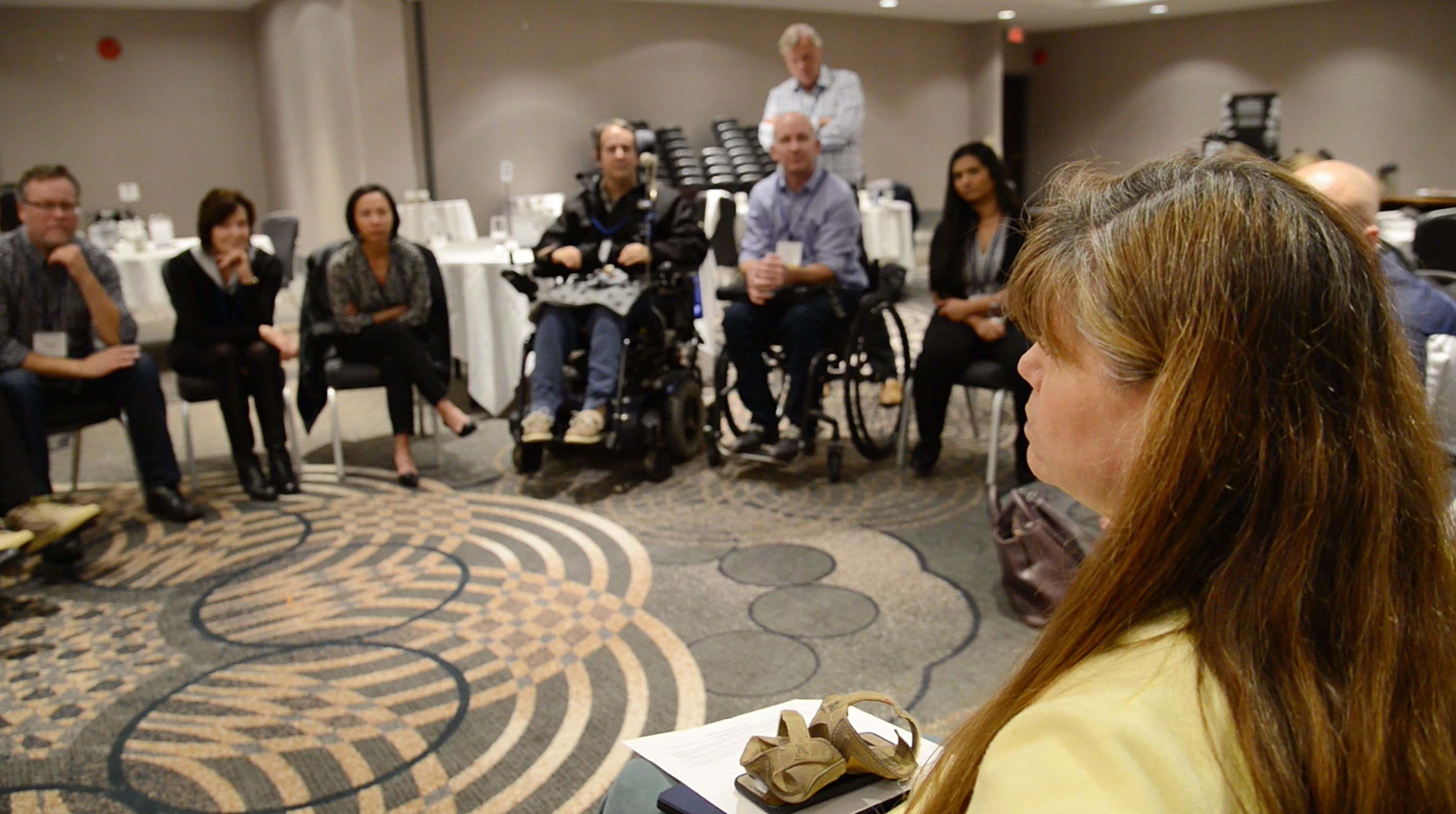
We’re always talking about the need for collaboration here at U2FP. Indeed, it’s how we approach our work everyday.
We constantly ask ourselves: who can we add to help enhance this difficult SCI conversation? How can we connect this young, creative advocate with the right scientists for her documentary? How can we arrange for this device entrepreneur to meet the smart post-doc we know who might speed his prototype out of beta testing? How do we articulate the frustrations of this journey while still remaining hopeful? What are the best practices for separating out the real science from the hype - and how can we help others in the SCI Community do the same?
Why is this collaborative approach important? Because Cures for Spinal Cord Injury can’t happen unless everyone working on Cures can win.
But who is “everyone”?
In the SCI World “everyone” comprises the following groups of people: Scientists, Clinicians, Bureaucrats (Government Funders & Regulators), Private Funders, and Industry (biotech, device and pharmaceutical companies). And of course us - the ‘patient group’ - what we at U2FP prefer to call the SCI community.
Each of these groups are working very hard to find solutions to a very complicated problem, a problem we in the SCI Community obviously know quite well.
But step back and think about the process; how these groups work collectively for cures.
Let’s say the NIH funds a scientist. Then that scientist discovers something critical about SCI. Let’s say it even gets great press that is both widespread and accurate.
In this scenario, the NIH and the scientist both did their job. Separately, both of these groups “won”. They can each legitimately feel satisfied with a job well done.
But then someone from industry takes a look and decides that s/he can’t invest in this discovery because:
- maybe it doesn't deliver an innovation that is robust enough or translatable to a therapy worthy of investing in
- or maybe they can’t guarantee that regulators will ensure it’s safety
- so there’s nothing for a clinician to prescribe
Everyone here did their jobs, likely very well. The Funders and the Scientists even “won”. And industry didn’t fail; on the contrary s/he played their part in the process, avoiding a "risky" investment. And yet, the SCI Community still loses.
This process makes it difficult for anyone in the SCI World to have everyone’s interest in mind. Except us. Because a “job well done” can’t just be a compliment - it must be an embodiment.
We need to remember our power in this process. We - the SCI Community - are the only metric that matters when it comes to Cures for SCI. We must start operating like a professional sports commissioner:
- The leader who has everyone’s best interest in mind
- Who’s ensuring every team, player, coach, manager and owner has what they need to be their best
- Who removes unnecessary obstacles for the good of the league
- Most importantly, someone who is responsible for ensuring that everyone wins
This is how U2FP tries to operate in all our initiatives. From Working 2 Walk (where we convene all the players) to our Cure Advocacy Network (where we help SCI Advocates make their case for research funding to state governments) to our Scientific Advisory Board (where we help smaller foundations utilize top-tier scientists to vet their research proposals) to our CureCast podcast (where we provide educational and insightful interviews with the leading scientists and advocates in the SCI Community).
We’re here to help you own your role as Commissioner of Cures. Because that’s how we in the SCI Community should be thinking and acting. U2FP is here for those of you who already understand this; but we’re also here to ensure we continue to bring as many people into this mindset as possible.
Join us!
Matthew Rodreick, Executive Director
U2FP

















